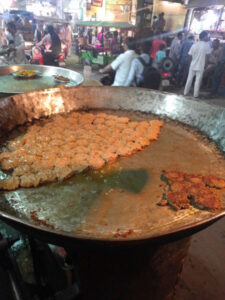
Cooking is an art and we possess the instinctive art of cooking,” proclaims, rather pompously, you’d think, the menu card of the restaurant called Purani Dilli in Zakir Nagar, near the Jamia Millia Islamia and close to the Batla House and New Colony areas of New Delhi. The nearest Metro station is Govindpuri.
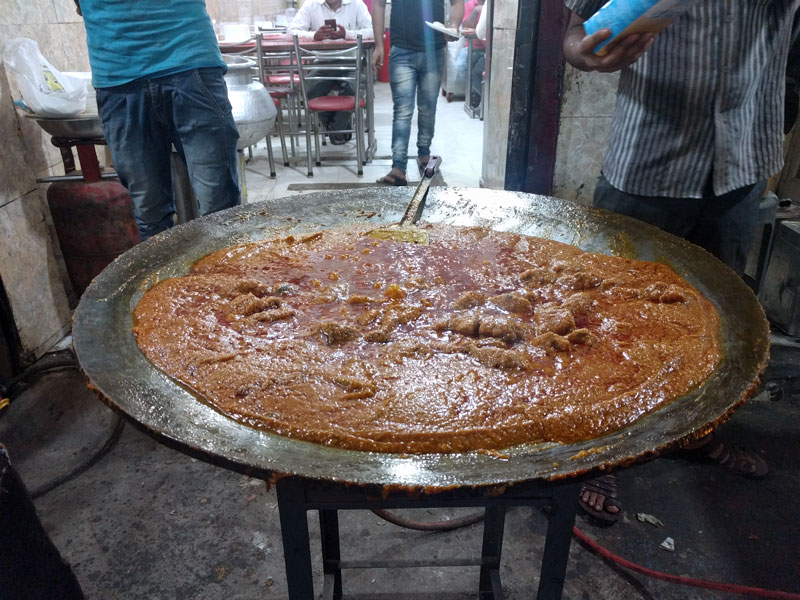
Inviting its patrons to “come walk down the memory lanes of Old Delhi and let us make it an affair to remember”, the restaurant promises delicious Mughlai food with “original recipes and authentic spices.”
It is our fourth and last stop in this unbelievable and freshly discovered food paradise in Delhi. The ambience, the chaos, the crazy traffic, the noise of vehicles whizzing past you in the narrow street give you the feel of Purani Dilli alright. We have been regular at Kareem’s … the original one near the Jama Masjid in the Red Fort area of Delhi, right from our trekking days in the Himalayas in late 1980s and early 1990s. After a visit to Gangotri or Kedarnath, and surviving on little more than aloo parathas in those yesteryears, the moment we hit Delhi it had to be either Kareem’s or Moti Mahal for some hard core non vegetarian fare.
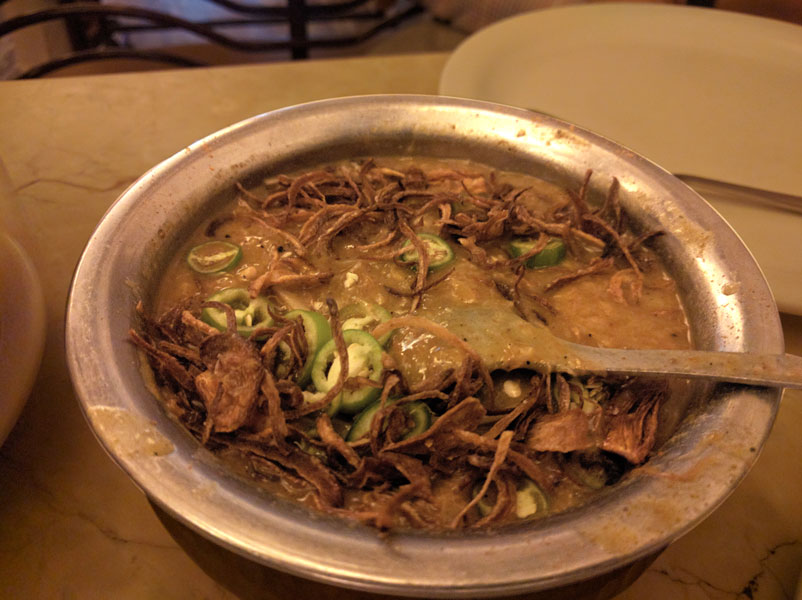
But this time around, our son, who lives in Delhi, promises a “much better food experience, but you’ll have to be prepared to walk; the place will be crowded. And don’t expect anything fancy, it is street food!”
I don comfortable foot gear, drop the handbag at home and swinging my arms march down the street, till I’m almost run over by a three wheeler. Our first stop is at a non-descript joint called Lucknavi Gilawati, where seating is organised on narrow benches. This place is famous for its galouti kebab. As you enter, the aroma of freshly pounded, spicy meat envelops you, and you soon catch a glimpse of the galouti mix placed on a huge steel platter on one side of the narrow eatery. On the other side, a couple of workers are engaged in making fluffy and soft ulta tawa rotis. In barely five minutes… it takes less than that for the magically marinated mix to get cooked to a tender delicacy that melts in the mouth… half a dozen disposable plates are slapped onto our table. Heaped with galoutis, tandoori rotis and chopped onions with lemon pieces.
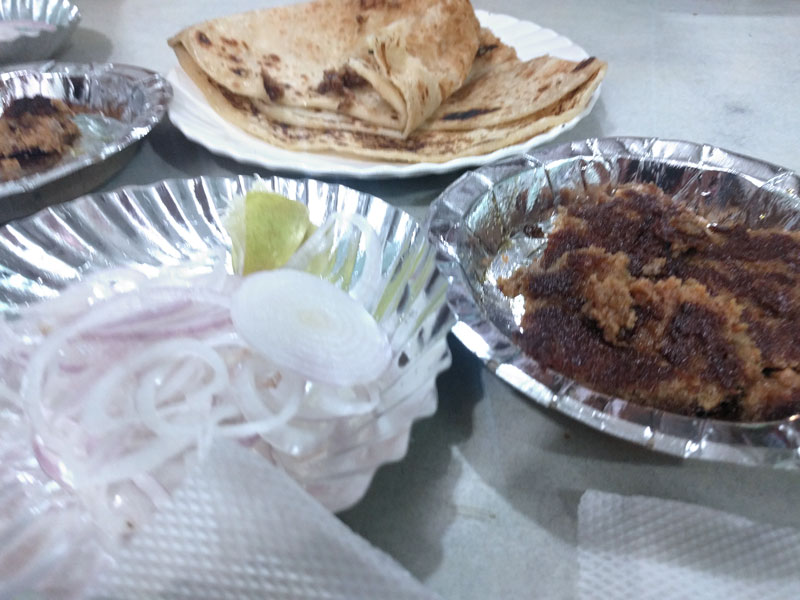
The galoutis are as soft as possible, utterly delicious, fragrant with freshly ground spices and can give Lucknow’s famous Tundewala Kebab a run for its money. And a plateful of the stuff costs an unbelievable Rs 40, about 4 small pieces. I polish off a plate and want more, but am refused the treat, with a strict warning: There are lots more to come and you won’t be able to enjoy the rest!
Our next stop is for mutton seekh kebabs; this is really roadside and all that is available for seating are a couple of little wooden stools. When bade ka or beef (buffalo) and mutton are on offer, chicken will seem a waste of time for any foodie! The seekh kebabs, along with fresh and spicy mint chutney, arrive in barely 6-7 minutes, and are succulent, juicy and well done… and a plateful of 4 or 5 pieces cost Rs 40-50; each kebab costs only Rs 10. These are mutton kebabs and the math simply doesn’t work out, until you consider they are rolled out of really thin slivers of meat, before being placed on the skewers for cooking.

Our food trail now pauses at the much written about and really famous Purani Dilli which boasts about “really authentic Mughlai food of yore”. The problem here is that the menu offers a whole range of tempting fare. Having already tried out the galoutis and seekh kebab, we opt to have Haleem. After all, how can a Mughlai food Odyssey be complete without Haleem? But this is a disappointment. Mind you, there is little wrong with it; it is well pounded, soft and tender and delicious. But having been spoilt by Hyderabadi Haleem, which scales another high during Ramzan, the Delhi Haleem simply doesn’t measure up. Also, it is served with tandoori roti, which isn’t really a great accompaniment.
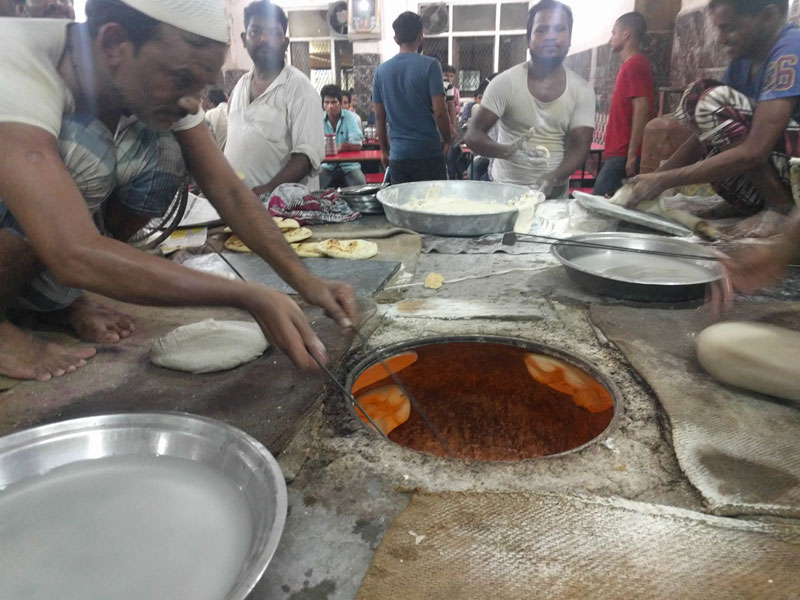
Coming away from Zakir Nagar without its famed and fragrant biryani is a sin, but the choice was between Nihari and biryani and the former won. Both my sons swear by the South Indian biryani, and it has to be admitted that the Awadh biryani is no patch on the Hyderabadi or even the Ambur biryani of Tamil Nadu. So Nihari it had to be and we trudged along to Javed’s Nihari. While on one side you can see Nihari cooking in a big degh (vessel), on the other side is a buzzing tandoor with fluffy khamiri rotis being turned out in quick succession.
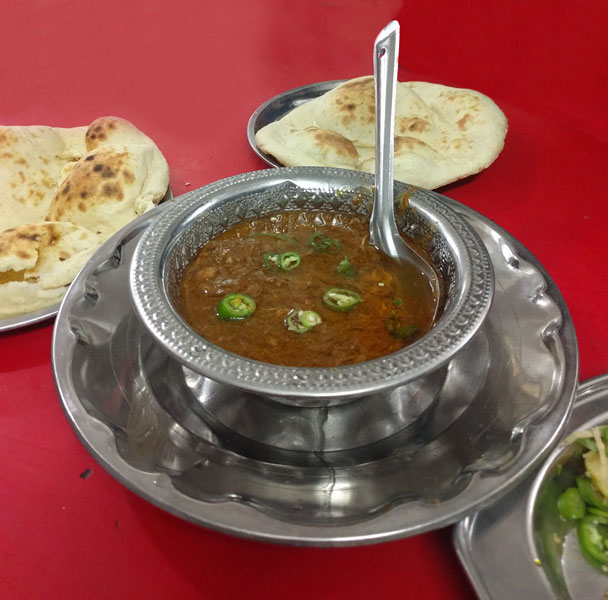
The Nihari is a Mughlai delicacy, on the origin of which there are two claims; one is that it took birth in Mughal kitchens of Old Delhi, while the other says it was born in the rival camp… the Awadh region or Lucknow. Wherever it was created, it is a delicacy that leaves you licking your fingers. Apparently, after the Partition, North Indian Muslims who opted to go to Pakistan introduced it in Karachi and other cities and now it has become the national dish of Pakistan and can be found in most Pakistani restaurants. It is also popular in Dhaka, Chittagong and other places of Bangladesh.
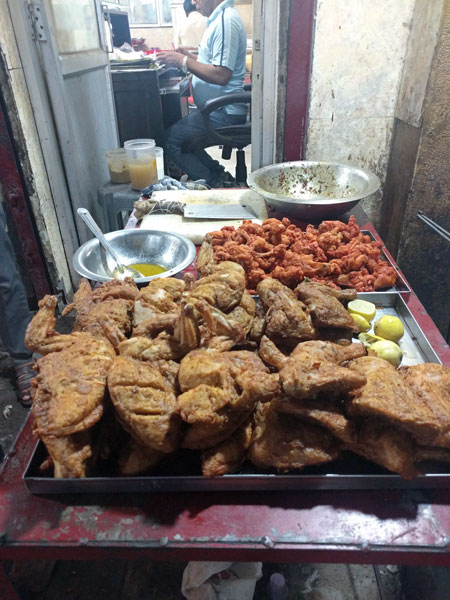
In a good Nihari, the meat has to be cooked, with lots of desi ghee, on low flame for at least 6 to 8 hours. And often it is cooked overnight, sometimes in vessels that are buried under the ground. Basically a winter dish, obviously because of its high calorific content, it is normally consumed at breakfast.

We opted for the mutton Nihari, and it was served with piping hot khamiri rotis. The Nihari was garnished with birishta or fried onion, green chillies, slivers of ginger, and there was so much of ghee floating on top that large spoonfuls of it had to be removed, in order to reach the mutton pieces and the gravy! The mutton is so tender, after all those hours of slow cooking with fragrant desi ghee, that it virtually melts in the mouth.
It’s been such a rich fare that it is impossible to try the famous firni that is available here. Not to mention its other reputed delicacies such as Paya (trotters), Kadhai ka Gosht, Korma, Bheja Masala, Saag Gosht, etc, and of course its biryani. Enough reason to go back.
Pictures by Rasheeda Bhagat





